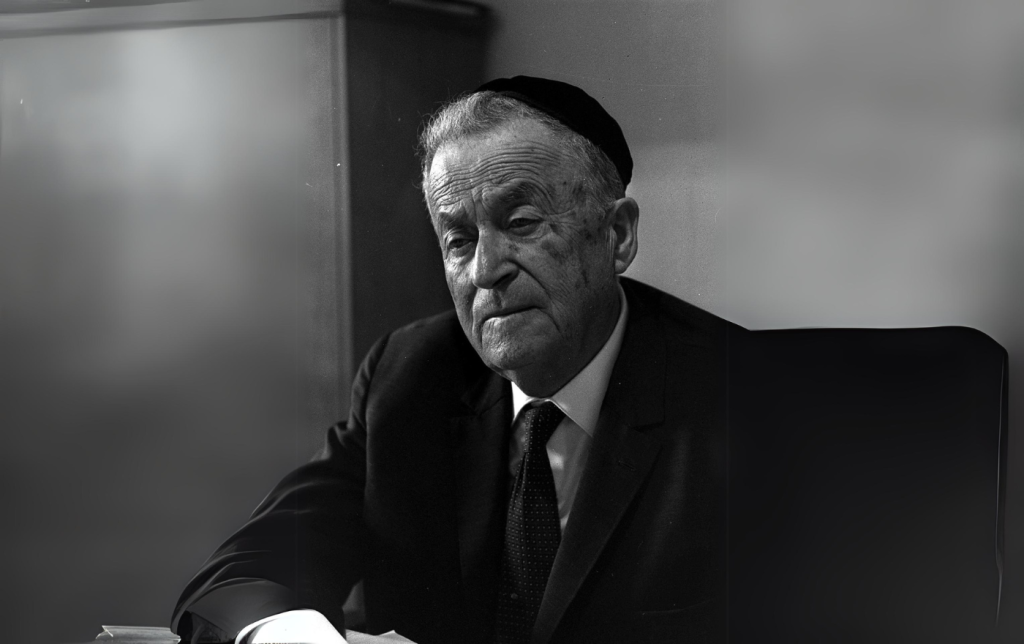Shmuel Yosef Agnon (Czaczkes) (1887-1970)
Shmuel Yosef Agnon (Czaczkes) went down in history as the first Hebrew-language writer who became a Nobel laureate in literature and received this award as a citizen of the State of Israel. In his Nobel speech in December 1966, he traveled along the memory lane to the town of Buchach, where he was born and which was featured prominently in his oeuvre.
Shmuel Yosef Halevi Czaczkes was born in July 1888 in what was then the Austro-Hungarian Empire. The writer’s father, Shalom Mordechai Halevi, a well-off cattle trader, was also well-versed in Jewish religious literature. Shmuel Yosef received his basic education in a cheder, where he studied Torah and Talmud in detail and with great interest. He began to write prose and poetry in his teenage years, and his first publications appeared on the pages of Jewish magazines and newspapers in Buchach, Lviv, Kolomyia, and Kraków, starting in 1903.
Shmuel Yosef later settled in Lviv, where he worked for some time as an editor of Jewish magazines. This period was crucial for his development as an author and for forging key contacts in the select Jewish milieu of the time in Lviv, especially in the company of Sholom Aleichem. He joined the Zionist movement and left for Palestine for the first time with a group of Buchach Jews in the summer of 1907. He tried to find his place in life, fulfill himself professionally, and write there. He began to write exclusively in Hebrew and continued to get his works published, including the story “Agunot” (Abandoned Wives), whose title gave rise to his pen name “Agnon.”
Agnon returned to Europe and settled in Berlin before the First World War. During this period, he taught numerous lectures on Jewish literature and intensively interacted with other Jewish writers there. In 1915, Agnon befriended the German-Jewish publisher Salman Schocken, who granted him a five-year scholarship to focus exclusively on literary work on the condition that Agnon would edit an anthology of Jewish literature. Agnon lived six years in Germany, staying for a long period in Berlin, where he married Esther Marx, and then in Hamburg, where his daughter Emuna and son Shalom Mordechai were born.
In 1924, Agnon returned to Palestine, which came under British rule after the First World War. After the Arab pogrom of 1929, Agnon briefly left Jerusalem. It was during this period that he visited Buchach for the last time. Impressions from this trip later formed the plot of his novel A Guest for the Night. Agnon’s works were widely published in German. At the end of the Second World War, Schocken opened a branch of his publishing house in New York and started bringing out Agnon’s books in English. The writer became known to the general public and began to pave his way to the Nobel Prize, which he received in 1966 for “his profoundly distinctive narrative art with motifs from the life of the Jewish people.” He shared the prize with Nelly Sachs, a writer of Jewish origin. Unfortunately, Agnon’s life was cut short when he died of a heart attack in 1970.
Unfortunately, Agnon’s texts were virtually unknown to Ukrainian readers until recently. Over the past decade, his novel A Guest for the Night was published in Ukrainian, giving the public at large an impetus to learn more about him. In 2015, the Agnon Literary Center was opened in Buchach, and the town launched a literary residence project in his memory one year later. Buchach and its residents remember their outstanding townsman who won the Nobel Prize. The city has had Agnon Street for three decades now; a memorial plaque was put up on the building where he lived, and his bust was installed there in 2016.
Today, Agnon is a writer whose work and biography can become a bridge of understanding in Ukrainian-Jewish cultural relations, as evidenced by his Nobel Prize diploma, which features Buchach and Jerusalem in close synergy.




















